

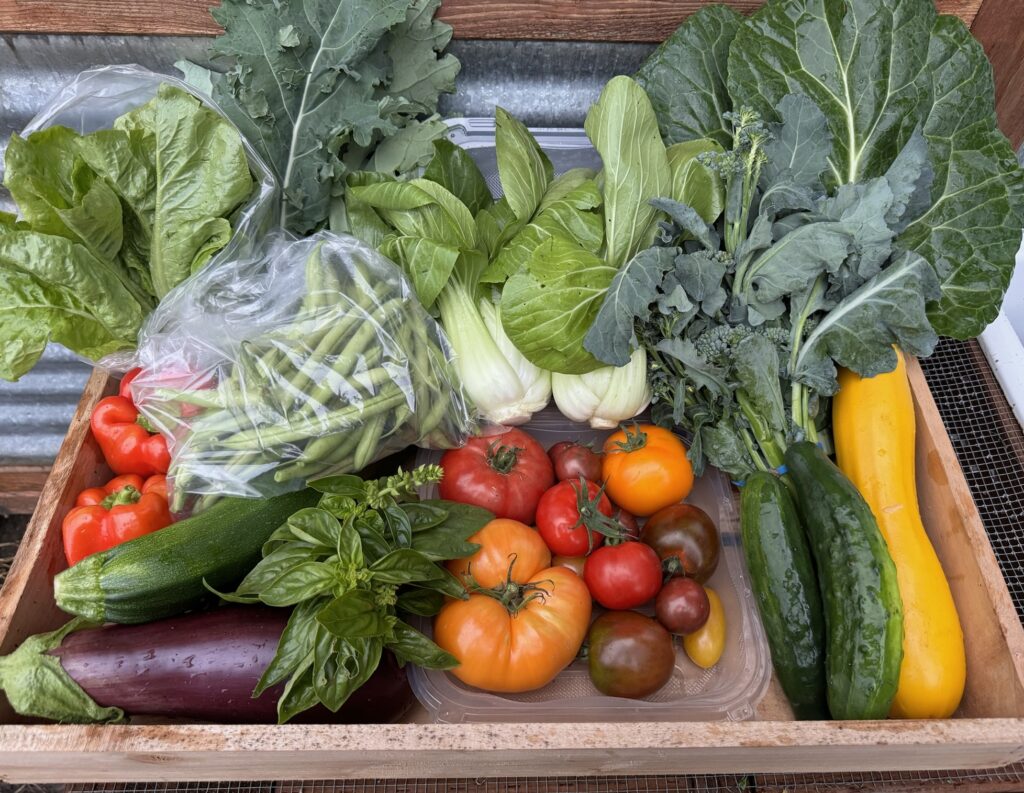
Quick list
Basil Mix, Bell Peppers, Collard Greens, Cucumbers, Green Beans, Japanese Eggplant, Lettuce, Pak Choy, Red Russian Kale, Summer Squash, Tomatoes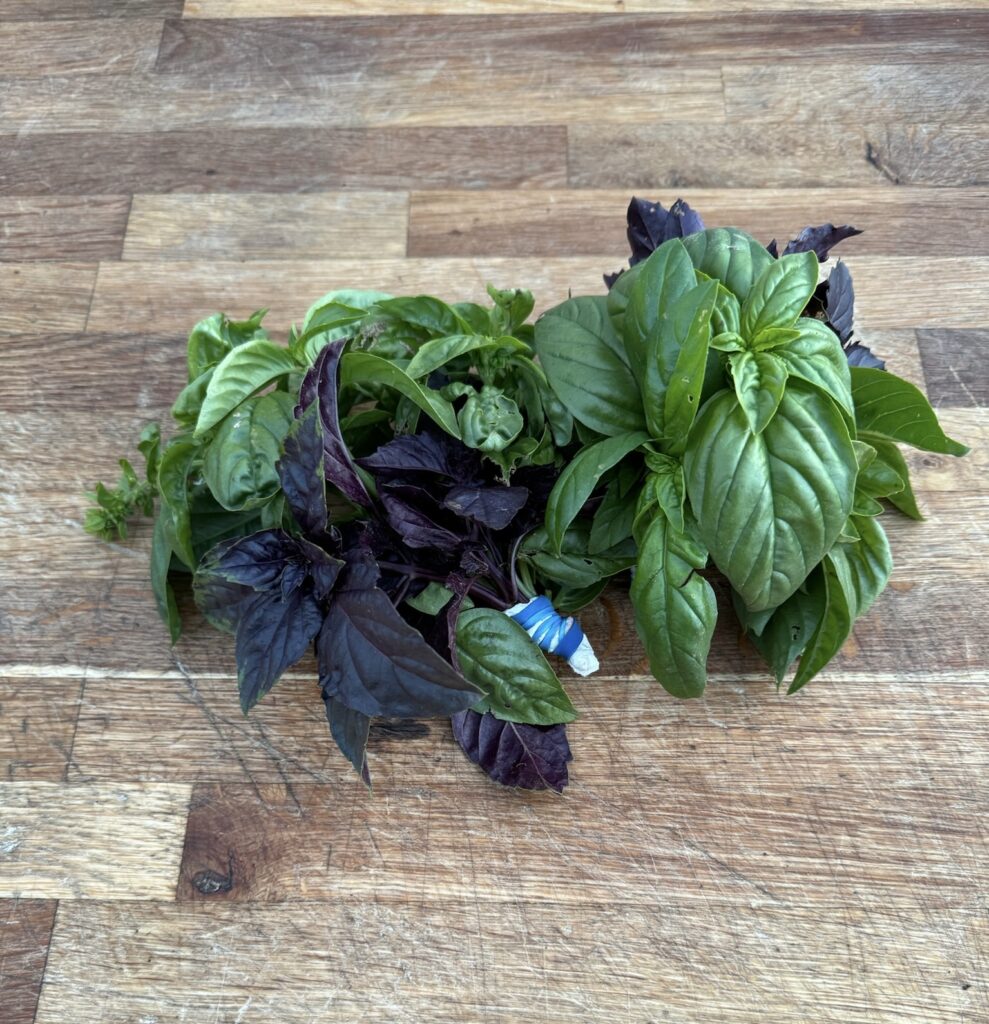
Basil is a highly aromatic herb with a distinct and vibrant flavor. Its leaves are glossy and bright green or purple, and they have a slightly sweet and peppery taste with hints of mint and cloves. Basil is known for its strong fragrance, which is both herbaceous and slightly floral. The scent of basil is often associated with Mediterranean and Italian cuisine, where it is widely used.
In a glass of water: Trim the stems and any leaves that would be under water. Use them first. Place the basil in a glass of water, just like you would with flowers. Store the glass in the refrigerator for up to a week or keep near a window. If you leave it out, you can use the leaves and roots will grow. Change the water every few days. Soon you can plant in a pot and have your own basil plant!
Refrigerator: place basil in a plastic bag with a paper towel or cloth to maintain moisture while allowing airflow.
Rinse. Remove leaves from stems. Chop or use the whole leaf. Eat raw or cooked.
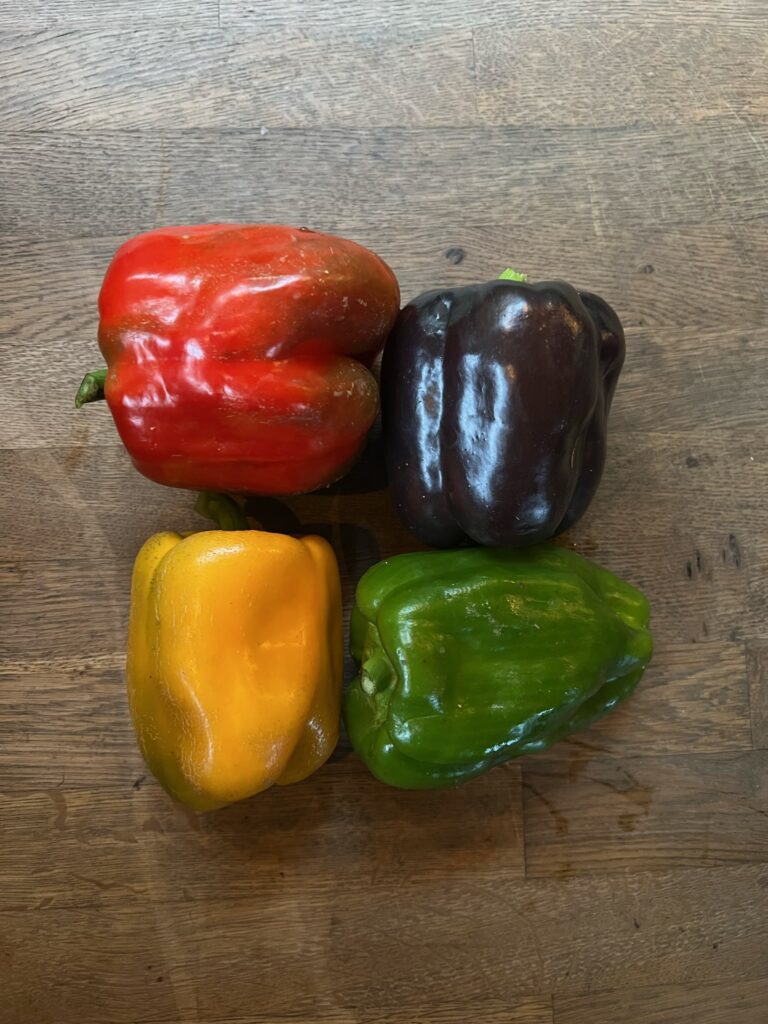
Bell peppers are colorful and crisp vegetables that belong to the nightshade family. These versatile peppers come in various hues, including green, purple, red, yellow, and orange, with each color offering slightly different flavor profiles, from the grassy and mildly bitter taste of green peppers to the sweet and fruity notes of their more colorful counterparts. Whether enjoyed raw in salads, stuffed with savory fillings, sautéed in stir-fries, or roasted to enhance their natural sweetness, bell peppers are a culinary staple celebrated for their versatility, nutritional value, and culinary appeal.
Please refrigerate.
Rinse. Remove seeds. Eat raw or cooked. Roast or blanch to remove skin.
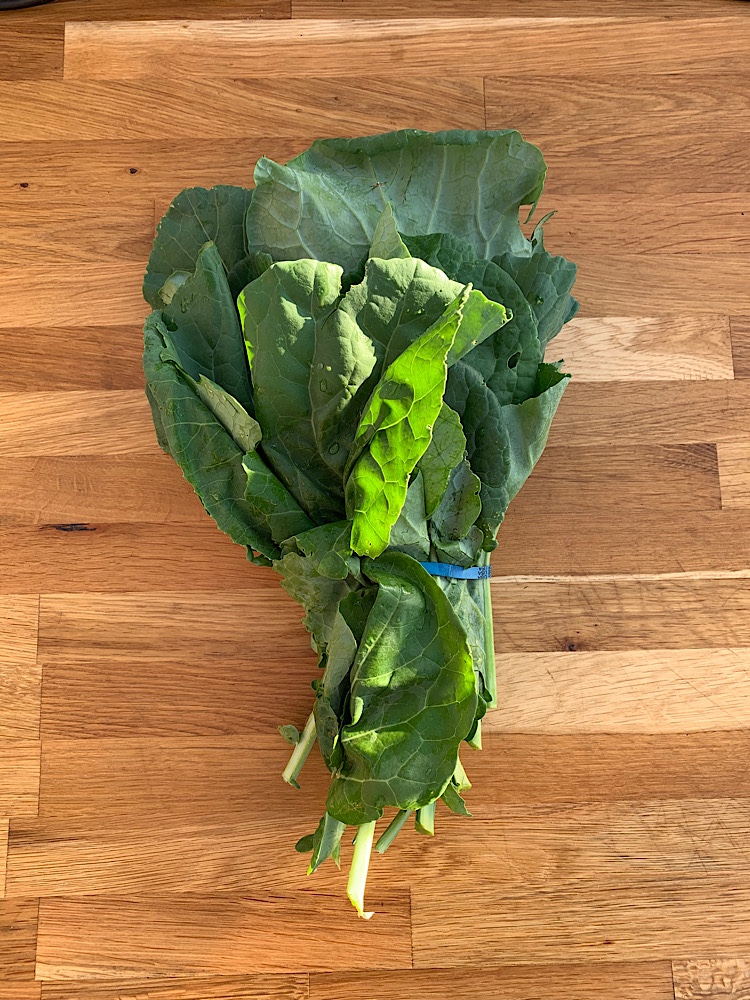
Collards are in the same family as cabbage, broccoli and cauliflower. A bitter green.
Rinse. Eat raw or cooked. Stems take longer to cook. I like to remove them and cook longer than leaves.
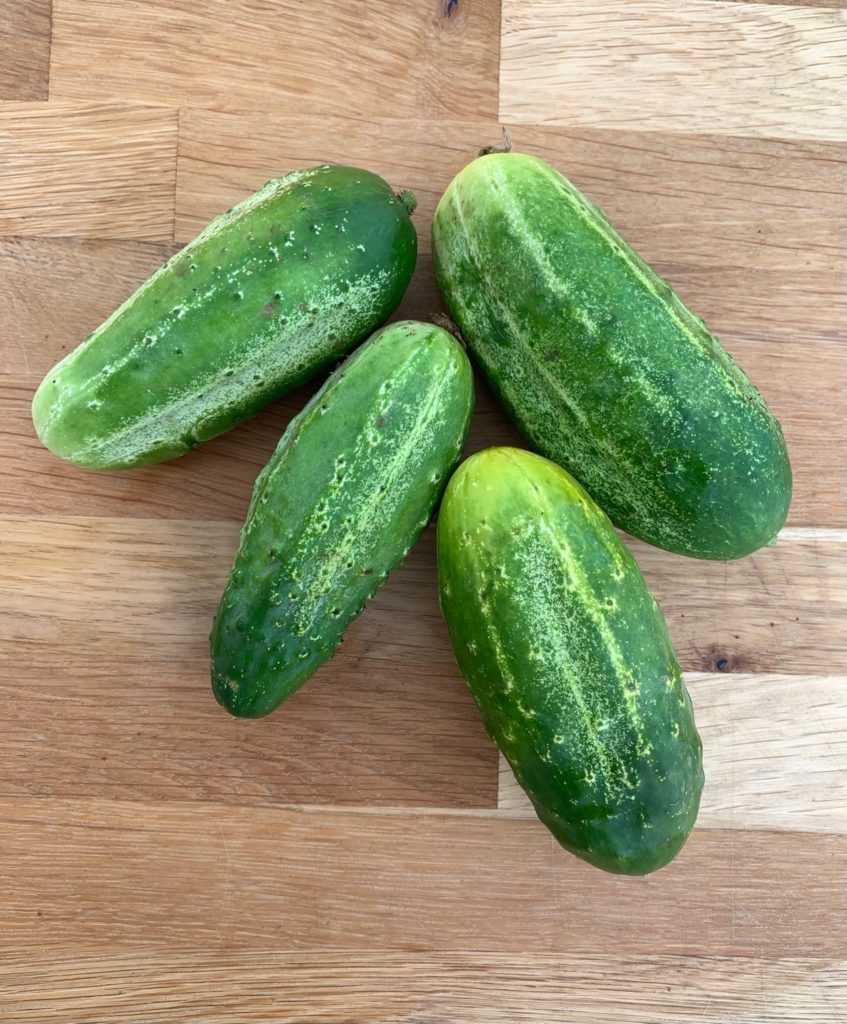
Cucumbers are a crisp and refreshing vegetable with a mild, subtly sweet flavor. They have a high water content, which gives them a hydrating and cooling quality. The flesh of cucumbers is pale green and juicy, with a crisp texture. They are commonly enjoyed fresh in salads, sandwiches, and wraps, or sliced as a refreshing snack.
Please refrigerate.
Rinse. Eat raw or cooked.
Pickling: To make refrigerator pickled cucumbers, start by washing and thinly slicing the cucumbers. Place the cucumber slices in a clean, sterilized jar or container. In a separate bowl, combine equal parts of water and vinegar (such as white vinegar or apple cider vinegar) along with salt and sugar to taste. Stir until the salt and sugar dissolve completely. You can also add spices like dill, garlic, mustard seeds, or red pepper flakes for extra flavor. Pour the vinegar mixture over the cucumber slices, making sure they are fully submerged. Place a lid or cover on the jar and refrigerate for at least 24 hours to allow the flavors to develop. The pickled cucumbers will keep well in the refrigerator for up to a few weeks, and they can be enjoyed as a tangy and refreshing snack or used as a topping for sandwiches, salads, or tacos.
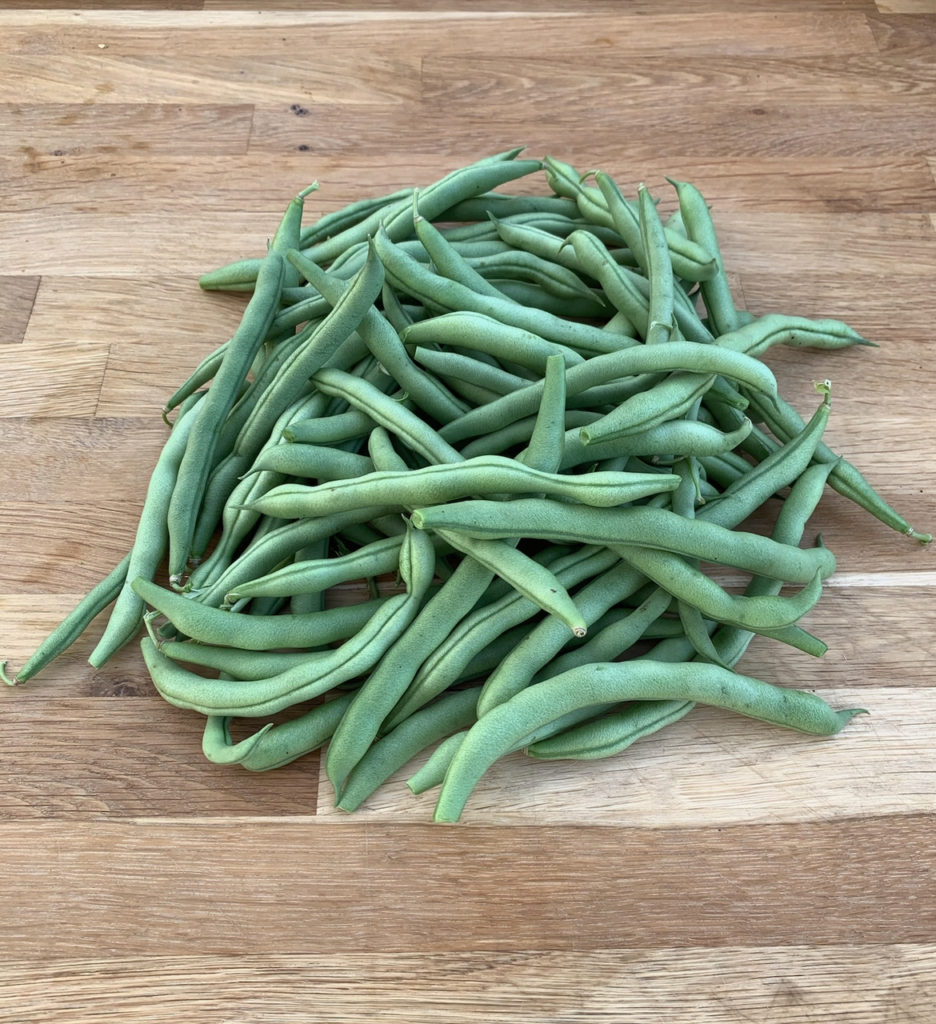
Green beans, also known as string beans or snap beans, are slender, elongated pods that are harvested when young and tender. They have a crisp and crunchy texture with a bright, fresh flavor. Green beans can range in color from vibrant green to yellow, and they are a popular vegetable used in various cuisines worldwide. Whether sautéed, steamed, roasted, or included in salads, stir-fries, or casseroles, green beans provide a satisfying and versatile addition to meals.
Green beans should be used sooner versus later. Place the unwashed green beans in a bag or a container lined with a dry paper towel to absorb excess moisture. Leave the bag slightly open or use a container with ventilation to allow for some airflow. Store the green beans in the refrigerator's crisper drawer, where they will stay fresh for up to a week. It's best to avoid washing the beans until you're ready to use them, as excess moisture can lead to spoilage.
These are Blue Lake Stringless beans. That means you only need to remove the stem end to enjoy. Rinse. Eat raw or cooked.
Freezing: Blanch the green beans by briefly boiling them in water, then transferring them to an ice bath to cool. Drain well and place the blanched beans in freezer-safe bags or containers. Label and date them before placing them in the freezer. Frozen green beans can be used in various cooked dishes such as soups, stews, and stir-fries.
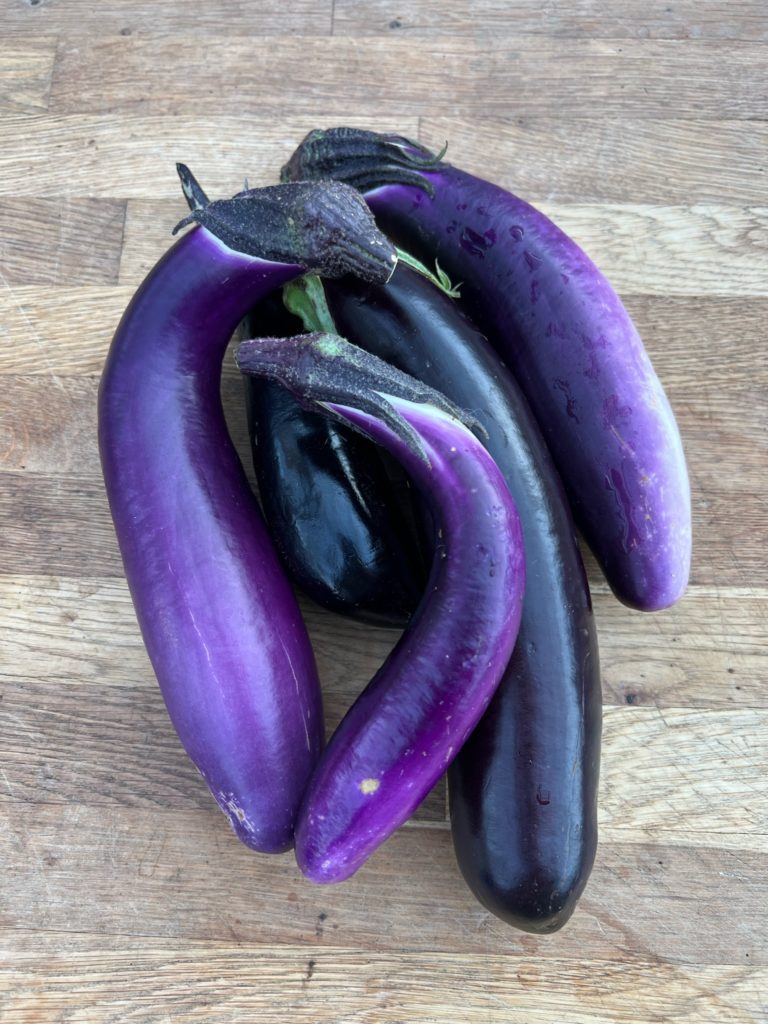
Japanese eggplant is a slender, elongated variety of eggplant commonly used in Asian cuisine. It features smooth, glossy skin that can range from deep purple to almost black, and its flesh is tender, creamy, and less bitter than larger eggplant varieties. It is incredibly versatile and can be grilled, roasted, stir-fried, or used in soups and stews. Its thin skin does not require peeling, and its mild taste absorbs sauces and seasonings beautifully, making it a favorite for dishes like miso-glazed eggplant, stir-fries, and curries.
To store Japanese eggplant, place it in a plastic bag or wrap it loosely in a paper towel and store it in the refrigerator's crisper drawer. This helps maintain its moisture and prevents it from becoming too dry. Ideally, use the eggplant within a week to ensure optimal freshness and flavor. Avoid storing it near ethylene-producing fruits like apples and bananas, as they can cause the eggplant to spoil more quickly. If the eggplant begins to soften or develop spots, it's best to use it immediately or discard it.
You can steam slices and freeze if you don't have time for them this week.
Rinse, remove the stem, and slice or chop as needed. Cook as desired.

Lettuce, a leafy green vegetable, is known for its mild and refreshing taste. With its crisp texture and delicate flavor, lettuce offers a light and cooling sensation in the mouth. The leaves are often tender and slightly sweet, accompanied by a subtle hint of bitterness that adds depth to its overall taste.
Rinse. Remove leaves from the base, chop or add whole leaves. Eat raw or cooked. If the lettuce starts to wilt, you can revive it by soaking the leaves in ice water for a few minutes before patting them dry and using as desired.
It's best to use it within a few days for optimal flavor. To store it, place unwashed leaves in a bag or a container lined with a dry paper towel to absorb excess moisture. Seal the bag or container loosely to allow for some airflow. Store the bag in the refrigerator's crisper drawer, where it will stay fresh for a few days.
Freezing: While lettuce doesn't freeze well on its own, you can use the freezing method for preserving lettuce for cooked dishes or for making soups, stews, or smoothies. Blanche or steam the lettuce briefly, then cool it down quickly in ice water and pat dry before freezing in airtight containers or freezer bags.
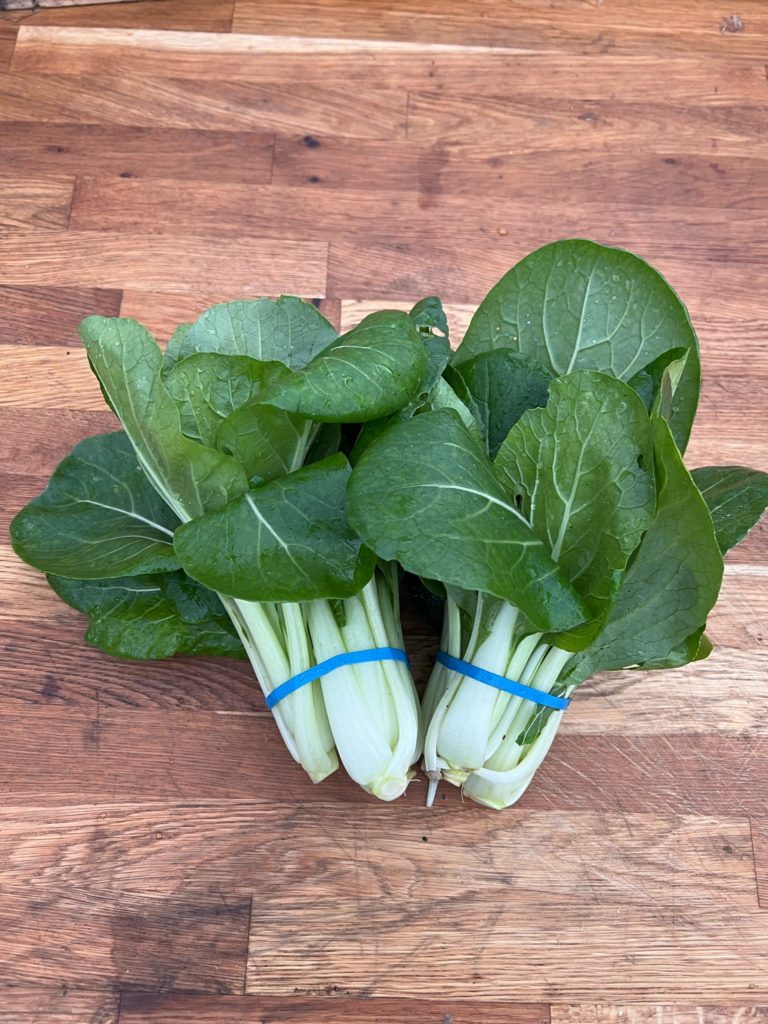
Pak choy, similar to bok choy or Chinese cabbage, is a leafy green vegetable widely used in Asian cuisines. It features dark green, crinkled leaves with white, crunchy stalks. Pak choy has a mild, slightly peppery flavor, and both the leaves and stems are edible. It is highly versatile, commonly stir-fried, sautéed, or used in soups and stews. Pak choy's tender, succulent texture and earthy taste make it a popular choice for adding a nutritious, leafy green component to a wide range of Asian and international dishes.
Rinse. Remove leaves from the base, chop or add whole leaves. Eat raw or cooked. If the leaves starts to wilt, you can revive it by soaking the leaves in ice water for a few minutes before patting them dry and using as desired.
It's best to use it within a few days for optimal flavor. To store it, place unwashed leaves in a plastic bag or a container lined with a dry paper towel to absorb excess moisture. Seal the bag or container loosely to allow for some airflow. Store the bag in the refrigerator's crisper drawer, where it will stay fresh for a few days.
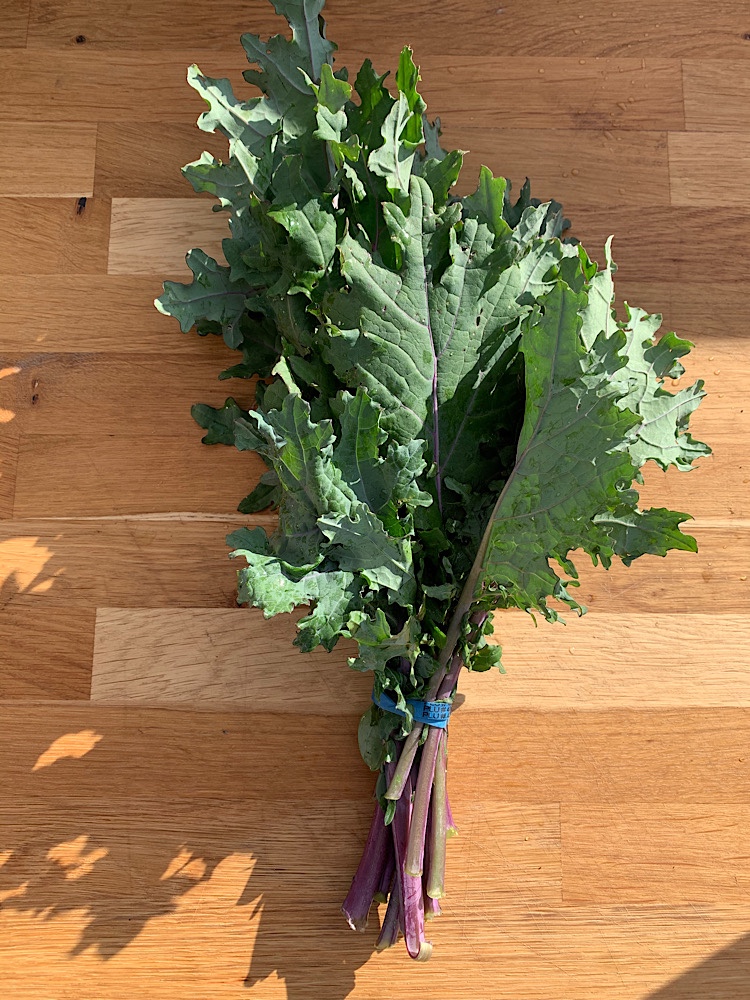
Kale, a leafy green vegetable renowned for its robust and earthy flavor, belongs to the Brassica family and stands as a nutritional powerhouse. Its slightly bitter, peppery taste lends itself well to a multitude of culinary applications, from hearty salads and smoothies to sautés and soups.
Rinse. Remove from stems because leaves cook faster. Chop or use whole leaves. Eat raw or cooked. If the kale starts to wilt, you can revive it by soaking the leaves in ice water for a few minutes before patting them dry and using as desired.
To store kale, place unwashed leaves in a container lined with a dry paper towel to absorb excess moisture. Seal the bag or container loosely to allow for some airflow. Store the bag in the refrigerator's crisper drawer, where it will stay fresh for a few days.
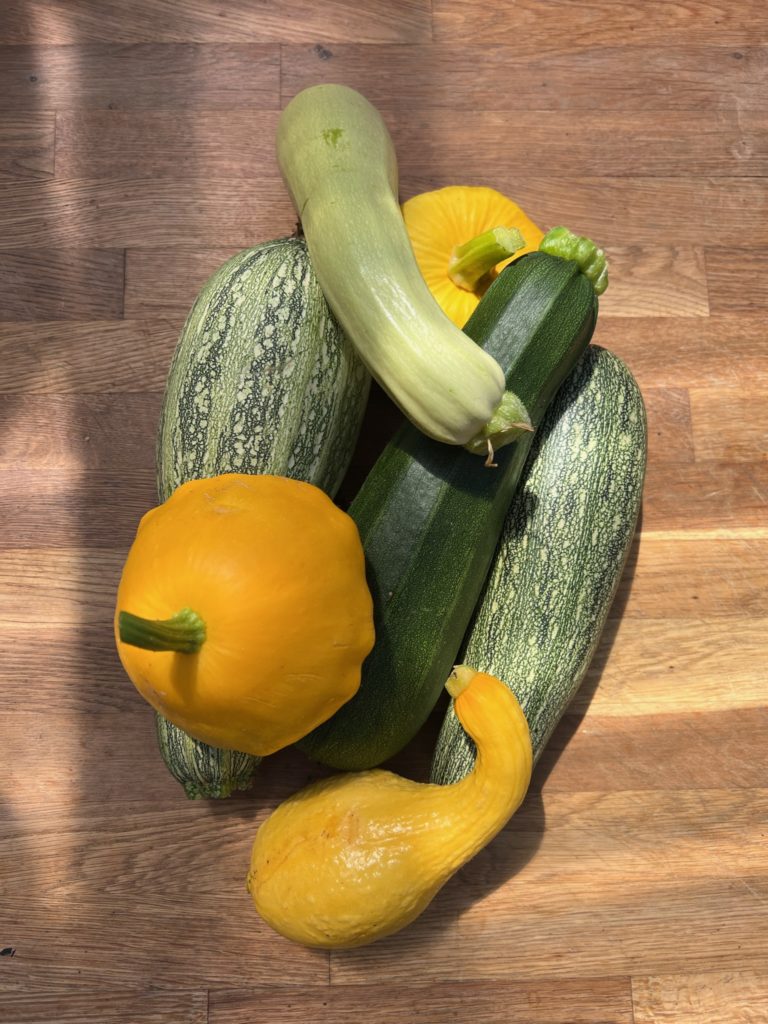
Summer squash refers to a variety of tender, edible gourds that are harvested during the summer months. They typically have a vibrant, yellow or green skin and a mild, slightly sweet flavor. Summer squash comes in various shapes, including elongated, cylindrical zucchini and round or bulbous varieties like pattypan and yellow crookneck squash. The flesh is tender and succulent, with a delicate texture that holds up well in both raw and cooked preparations.
Rinse. Eat raw or cooked.
Handle gently. The skin is thin and fragile. Keep on the counter and use within a week. If you aren't going to use them right away keep in the refrigerator.
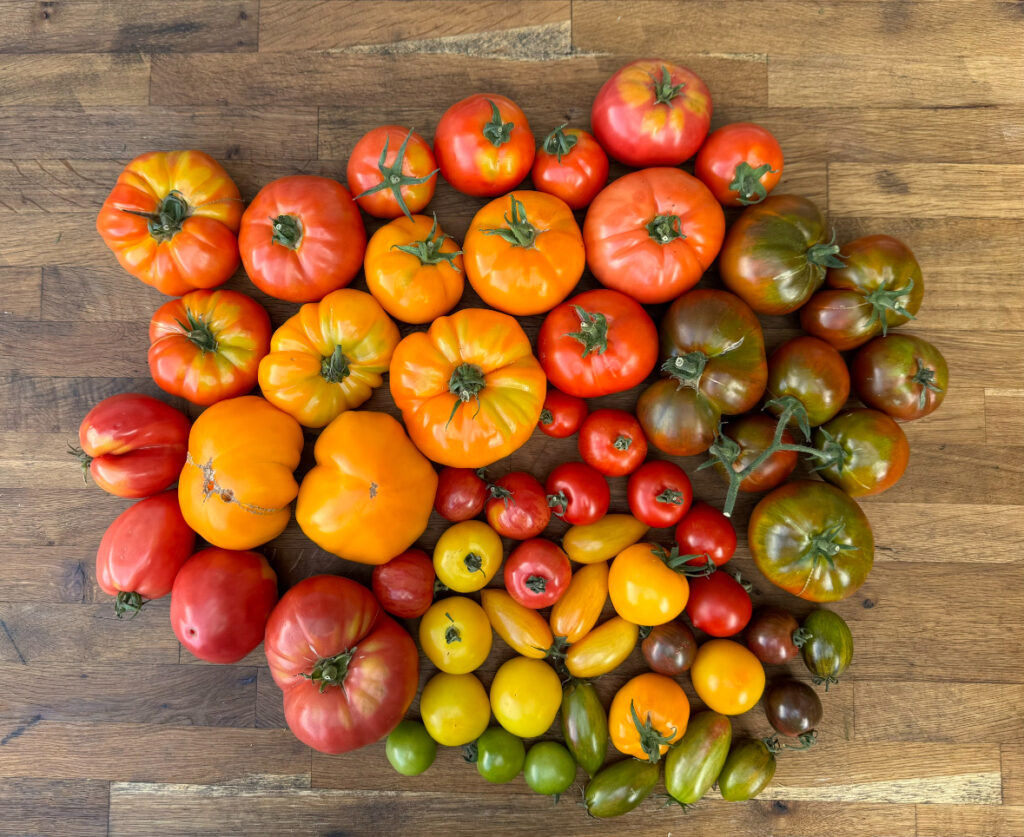
Tomatoes, a widely cherished fruit often treated as a vegetable, encompass a remarkable spectrum of colors, sizes, and flavors. Their smooth, glossy exteriors encompass a juicy and fleshy interior, bursting with a sweet and tangy taste. Ranging from vibrant reds to yellows, oranges. Enjoy raw in salads, sandwiches, or salsas, or transformed through cooking into sauces, soups, and stews.
Keep ripe, uncut tomatoes at room temperature, away from direct sunlight, in a single layer with the stem side up to prevent bruising. If tomatoes are not fully ripe, place them in a paper bag at room temperature to encourage ripening. Once fully ripe, you can transfer them to the refrigerator's vegetable drawer, but allow them to return to room temperature before consuming for optimal flavor. Avoid storing tomatoes in airtight containers, as this can lead to moisture buildup and affect their quality. Use tomatoes within a few days of ripening for the best taste and texture.
Rinse. Eat raw or cooked.